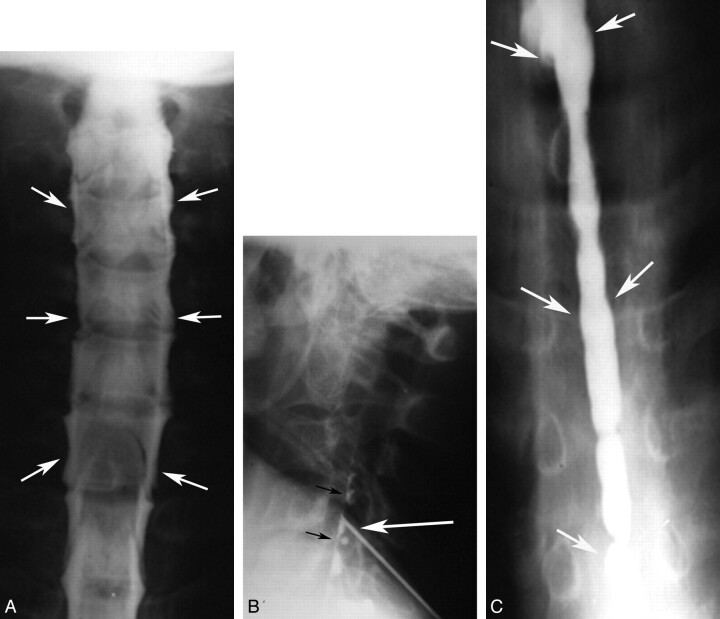Fig 3.
Cervical syrinx cavity demonstrated by myelography and myelocystography. A, Frontal cervical myelographic image shows a typical intramedullary mass with enlargement of the cord and thinning of the surrounding subarachnoid space (arrows). B, Lateral image of the cervical spine obtained during cyst puncture at the C4 level shows a needle tip projecting over the middle of spinal canal (white arrow) with a small amount of contrast in the cyst (black arrows). C4 was chosen as a site of puncture because this was where the cord was most expanded. C, Frontal image of the lower cervical and upper thoracic spine obtained following needle removal, showing contrast with a cystic cavity, compatible with a syrinx (arrows) extending inferiorly to approximately T7. It was not uncommon for the syrinx to be more extensive than suggested by myelography.

